Are you a Quiet Speculation member?
If not, now is a perfect time to join up! Our powerful tools, breaking-news analysis, and exclusive Discord channel will make sure you stay up to date and ahead of the curve.
Happy halloween, everyone! By the time my next article rolls around, we'll all have Kit-Katted (or in my case, Coffee Crisped) ourselves into a spooky stupor. So what better time than now to head off a Modern Top 5 series focusing on Magic's five colors? Naturally, we'll start with the scariest, so yank your head out of the apple barrel and flick on the nightlight!
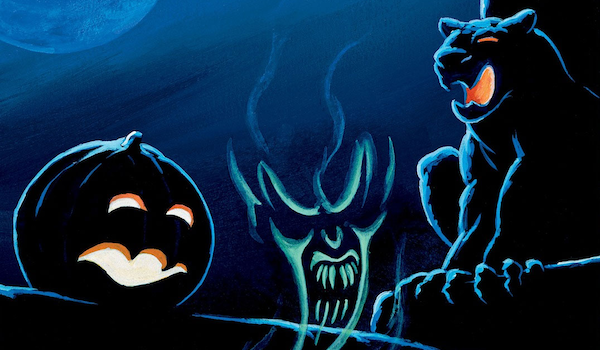
Fairness has never favored the color pie, no matter the format; in Magic's early days, blue reigned supreme above the rest, endowed with the game-defining Counterspell in addition to the Power Nine's only colored entries. Since then, players of all sorts have made arguments for other colors as worthy of the ultimate title. In Modern, though, the discussion historically favors green and black; the former boasting the washed-out Tarmogoyf and Modern's most reliable card selection now that Faithless Looting has passed the torch, and the latter fronting... well, everything: hand disruption, top-notch removal, and menacing threats.
Carving Out the Criteri-o'-Lantern
No Modern Top 5 would be complete without a metric. Since the top cards in a given color can include any type of spell—planeswalker, hate, beater—we'll aim to use the most general metrics possible. I think those happen to be the ones established in the series's first entry, Modern Top 5: Utility Cards. Here they are again.
- Power: The degree of impact the card tends to have for its cost.
- Flexibility: The card’s usefulness across diverse situations and game states.
- Splashability: The ease with which Modern decks can accommodate the card.
Power and flexibility will be rated by considering both a card’s floor (the least it will do) and its ceiling (its best-case scenario). For example, Lightning Bolt‘s power floor is higher than Fatal Push‘s, as Push is dead when opponents have no creatures while Bolt can go to the face.
Splashability will be rated by considering how many existing Modern decks can accommodate the card and whether they’ll want it. For example, despite its lack of a color identity, Ghost Quarter doesn’t fit into BGx midrange decks. These decks can easily run Fulminator Mage as mana disruption instead, and prefer not to miss a land drop if they don’t have to.
Each metric will be rated out of 5, giving cards a total rating out of 15. As ever, the usual disclaimer stands: just because a card scores low or doesn't make the list means little in terms of its overall playability. After all, splashability is a metric. Some of the strongest cards in the format in terms of raw tournament wins are themselves rather limited in terms of which decks can employ them.
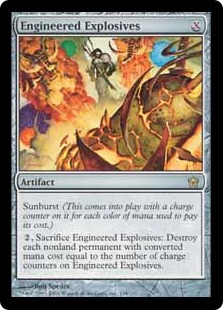 #5: Plague Engineer
#5: Plague Engineer
Overall: 10/15
Power: 3
Plague Engineer is what we call a blowout card—one that might have little impact, but also has the potential to single-handedly swing games. As such, it lands right in the middle of the power metric at 3 points, as well as in the middle of most black sideboards. Threboaste mana seems like a fair price to pay for this effect, if a little on the steep side; still, players probably won't want to slam a sweeper until after opponents have deployed a couple creatures. With a 2/2 attached, Engineer beats its namesake Engineered Plague on raw rate.
Flexibility: 3
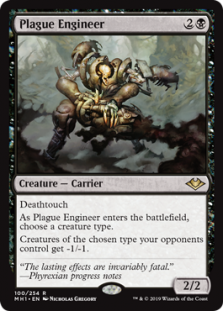 The Carrier mostly exists for one purpose, but it has a couple additional applications. For one, it's got deathtouch, allowing it to trade with the biggest, baddest fatty on the table. And it's a creature, giving it extra dimensions over other permanent hosers. Engineer's typing makes it more vulnerable to enemy disruption; most removal spells will kill it. But the decks it's brought in against are usually of the tribal aggro variety, and those don't feature much in the way of creature interaction. Often, Engineer's 2/2 body is a boon, letting pilots turn the corner on infected opponents or block their shrunken guys.
The Carrier mostly exists for one purpose, but it has a couple additional applications. For one, it's got deathtouch, allowing it to trade with the biggest, baddest fatty on the table. And it's a creature, giving it extra dimensions over other permanent hosers. Engineer's typing makes it more vulnerable to enemy disruption; most removal spells will kill it. But the decks it's brought in against are usually of the tribal aggro variety, and those don't feature much in the way of creature interaction. Often, Engineer's 2/2 body is a boon, letting pilots turn the corner on infected opponents or block their shrunken guys.
In terms of the -1/-1 ability, it's to Engineer's credit that any creature type can be called. Having the ability to name, say, Human against an Eldrazi deck with multiple Noble Hierarchs on the board gives the card some extra play and makes decisions involving the call more dense.
Splashability: 4
With just one black mana in its cost, Engineer is plenty splashable. Modern is known for its great mana, so pretty much anyone looking to cast Plague out of the sideboard is able to. As a sideboard card, its splashability is increased, as Games 2 and 3 tend to be longer than Game 1; players have more time to find their colors and bullets.
#4: Liliana of the Veil
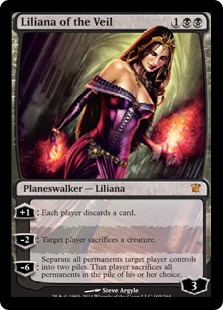 Overall: 11/15
Overall: 11/15
Power and Flexibility: 4
As covered in Modern Top 5: Planeswalkers, Liliana applies heaps of non-damage pressure against anyone from critical-mass combo like Ad Nauseam or Valakut to fellow midrange and control decks like Jund or Stoneblade.
Splashability: 3
I've previously given Liliana a 4 on splashability, reasoning that any black deck can cast her. While that may be true, not any deck can cast her, and the double-black cost is prohibitive for all but the most dedicated of Temur decks. So, I take it back—Liliana, welcome to the bottom half of the Top 5. How the mighty have fallen!
#3: Collective Brutality
Overall: 12/15
Power: 4
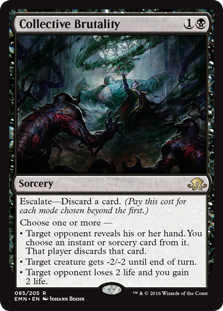 Collective Brutality is our second and last card to return from a previous edition of Modern Top 5, having placed 2nd in Utility Cards. While none of its abilities are all that strong on their own, they combine to let the card do an insane amount of work for just two mana. The "cost" of discarding can even be a benefit in decks that need certain pieces of their engines in the graveyard to function, such as Dredge, Phoenix, and reanimation strategies.
Collective Brutality is our second and last card to return from a previous edition of Modern Top 5, having placed 2nd in Utility Cards. While none of its abilities are all that strong on their own, they combine to let the card do an insane amount of work for just two mana. The "cost" of discarding can even be a benefit in decks that need certain pieces of their engines in the graveyard to function, such as Dredge, Phoenix, and reanimation strategies.
Flexibility: 4
As for those abilities, they all draw from different parts of black's wheelhouse: losing life; gaining life; shrinking creatures; killing creatures; discarding cards. While Brutality can prove a lackluster draw at times, there's nary an instance in which it's totally dead.
Splashability: 4
As with most cards on this list, Brutality costs only one black mana, making it an attractive consideration for anyone dipping into the color.
#2: Fatal Push
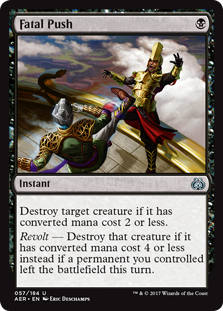 Overall: 13/15
Overall: 13/15
Power: 5
On to the real winners. In the number two spot we have Fatal Push, a card that redefined Modern removal, and by extension the benchmark for creature playability. At just one mana, Push kills an overwhelming majority of the most-played creatures in Modern, no matter which month you check the list (as of today, only Primeval Titan is safe from its grasp). Hitting many of those leads to a tempo boost similar to that offered by the much-narrower Spell Snare, once a Modern staple in pre-Push times. Thanks to fetchlands, revolt is live very often.
Flexibility: 4
Push is about as flexible as possible for a removal spell. I'd give Path to Exile a 5 here because it can take out literally anything, including creatures with persist or undying; I've given Bolt a 4, as while it kills less creatures than Push, it can also go to the face. In any case, I think Push is now the yardstick by which we measure what any removal spell can do.
Splashability: 4
While Push is as splashable as the rest of these one-color cards, it's rarely dipped into as an off-color sideboard option. Rather, its numbers fluctuate between 1 and 4 in decks maining black for other reasons. That's not to say Push isn't one of the main draws to the color. Like red (for Lightning Bolt) and white (for Path to Exile), the card makes black one of the necessary splashes for blue or green decks looking to interact.
#1: Thoughtseize
Overall: 14/15
 Power: 5
Power: 5
The big winner should come as little surprise. Thoughtseize charges 2 life for one of the most powerful abilities in Magic: to strip any nonland card from an opponents' hand. To this day, no other card has been printed that executes that task as reliably and unconditionally as Thoughtseize, though its many imitators have seen plenty of tournament-level play; Inquisition of Kozilek, Duress, and the aforementioned Collective Brutality all spring to mind.
Flexibility: 5
True, discard spells do nothing when opponents have no cards in hand. But played carefully, Thoughtseize is never dead. It can be held until opponents do find cards, and then leveraged to push nasty plays through hidden permission or removal. Conversely, Seize excels at breaking up enemy synergies, ridding opponents of cards before they have the chance to come down and generate value. I'd say the main factors keeping Thoughtseize at bay are aggro's metagame presence and the fact that replacements get the job done often enough to warrant a split.
 Splashability: 4
Splashability: 4
Not only is Thoughtseize quite splashable, it is frequently splashed—along with Push as a deck's interactive backbone, or as part of a sideboard strategy to provide insulation against synergy-dependent decks. Most often, though, it's featured as the former, best exemplified by Jund, the midrange king now returned to its throne by Wrenn and Six.
Boo-m!
That rounds out our first color-based Modern Top 5. Notably, all the cards in this list but Liliana of the Veil will be legal in Pioneer, Wizards's newest format; black seems poised to be very strong there. And it's certainly not going anywhere in Modern, where I'd say it still holds the title after all these years. Disagree? Fight me... in costume!





